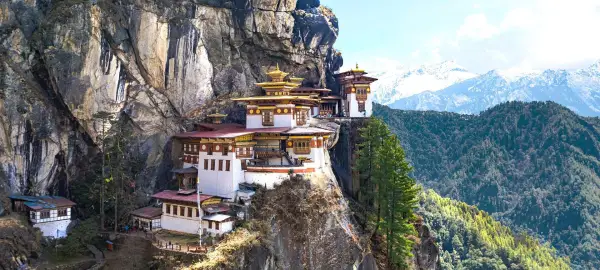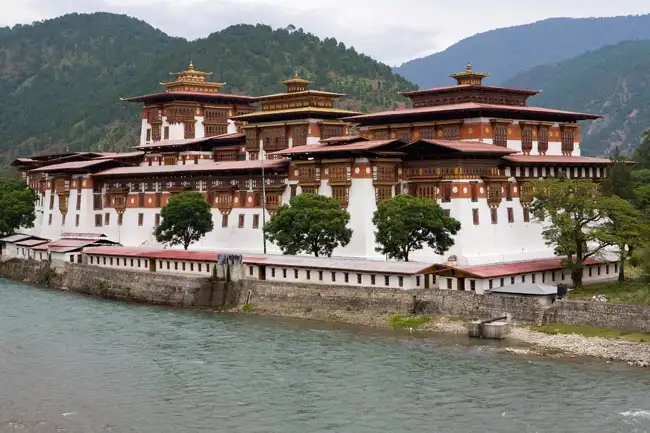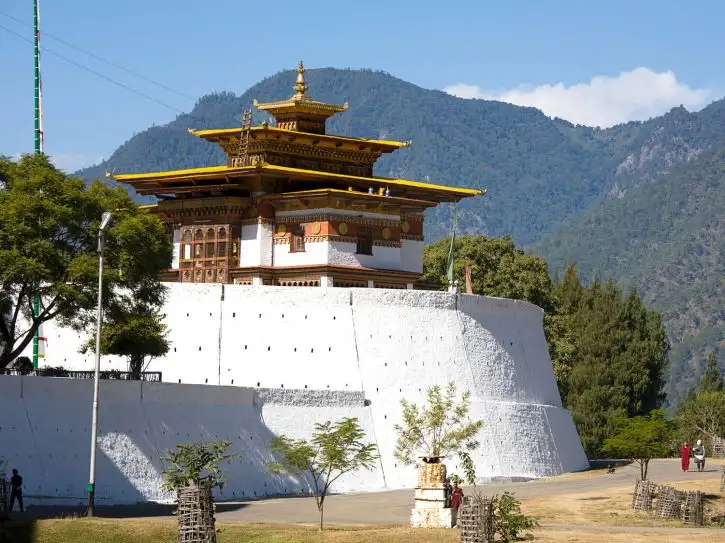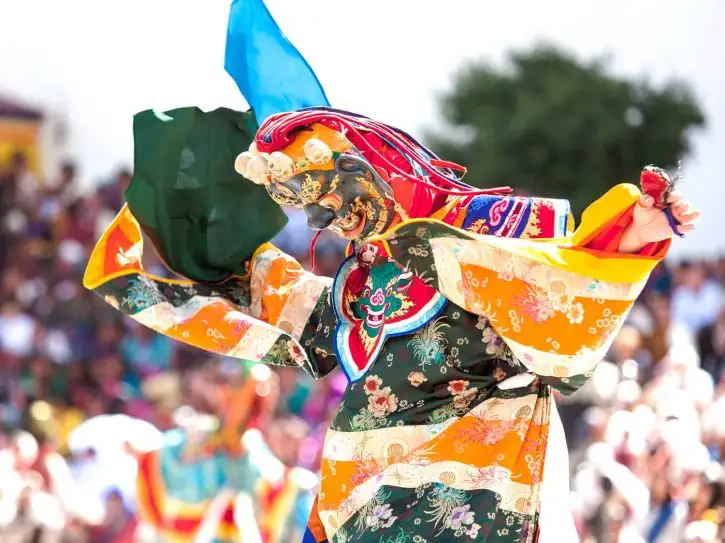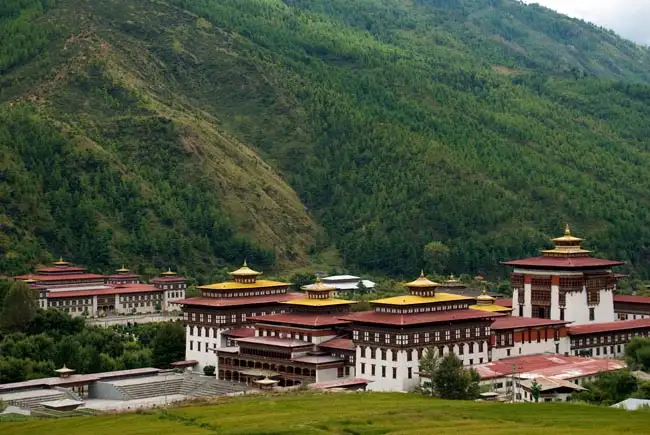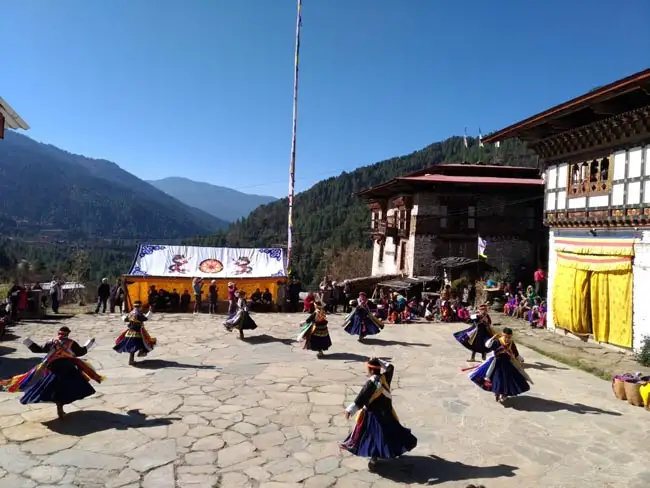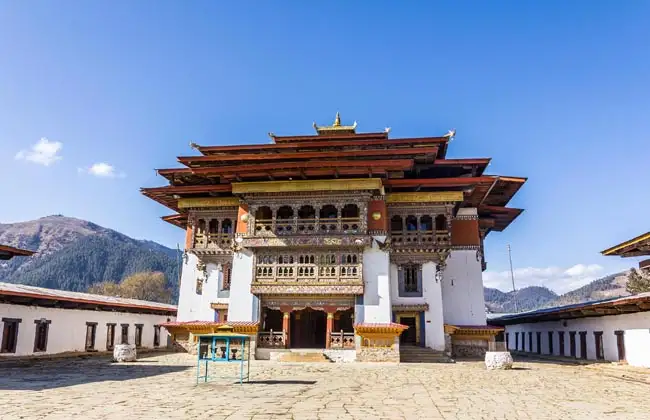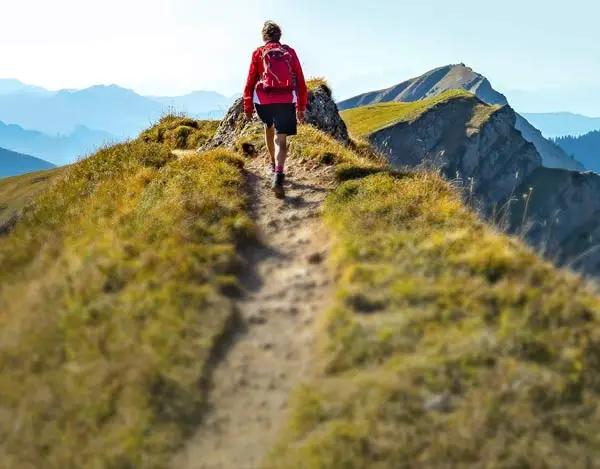Today we will head for the Bumthang Valley (2800m/9,185 ft), taking us past the famous Trongsa Valley, which used to be the seat of the royal family. Trongsa Dzong straddles the ancient path to the east, and is an amazing architectural sight. The recently renovated Taa Dzong (watch tower) serves as a museum. This commanding dzong, high above the roaring Mangde Chhu, is perhaps the most spectacularly sited dzong in Bhutan, with a sheer drop to the south that often just disappears into cloud and mist. The dzong is a massive structure with many levels, sloping down the contours of the ridge on which it is built. Because of the dzong’s highly strategic position, on the only connecting route between east and west, the Trongsa Penlop was able to control effectively the whole of the central and eastern regions of the country from here.
After our visit to Trongsa we the continue past the picturesque Chumey Valley and later arrive in Bumthang. Chumey Valley is renowned for its yathra weaving, and there is a weaving centre en route that we will be able to visit. Yathra is a woolen embroidered cloth unique to Bumthang, and we will learn more about its production.
Bumthang is often considered to be the cultural heartland of Bhutan. Buddhism was introduced into Bhutan by the Guru Padmasambhava who was invited into Bhutan by a local king of Bumthang (at that time a unified Bhutan under one ruler did not exist). Bumthang has an individuality that charms its visitors and separates it from other regions. Comprising of four smaller valleys namely Tang, Ura, Choekhor and Chumey, the deeply spiritual region of Bumthang is shrouded in religious legend. Bumthang is also the traditional home to the great Buddhist teacher Pema Lingpa to whose descendants the present dynasty traces its origin.
The scenic region of Bumthang is dotted with monasteries and historic sites. Today we visit the Jambay Lhakhang and Kurjey lhakhang. The Jambay monastery is said to have been built by the Tibetan King Songsten Goembo. Inside the Lhakhang there are three steps which are said to represent the three ages. One step is for the age of the historical Buddha, the next is for the age of the Guru (also the present age) and the last represents the new age. It is believed that when all three steps sink into the earth the world as we know it will end.
There are three temples dotting thes sanctuary of Kurjey Lhakhang. The oldest monastery holds a body print of the Guru on a rock. The first King of Bhutan and the present Queen Mother built the second and the third temples respectively. This monastery complex is revered by the Bhutanese as one of the most sacred sites and there is a spring located just above the monastery complex which is believed to be blessed with curative properties.
Overnight in Bumthang.
Included Meal(s): Breakfast, Lunch and Dinner